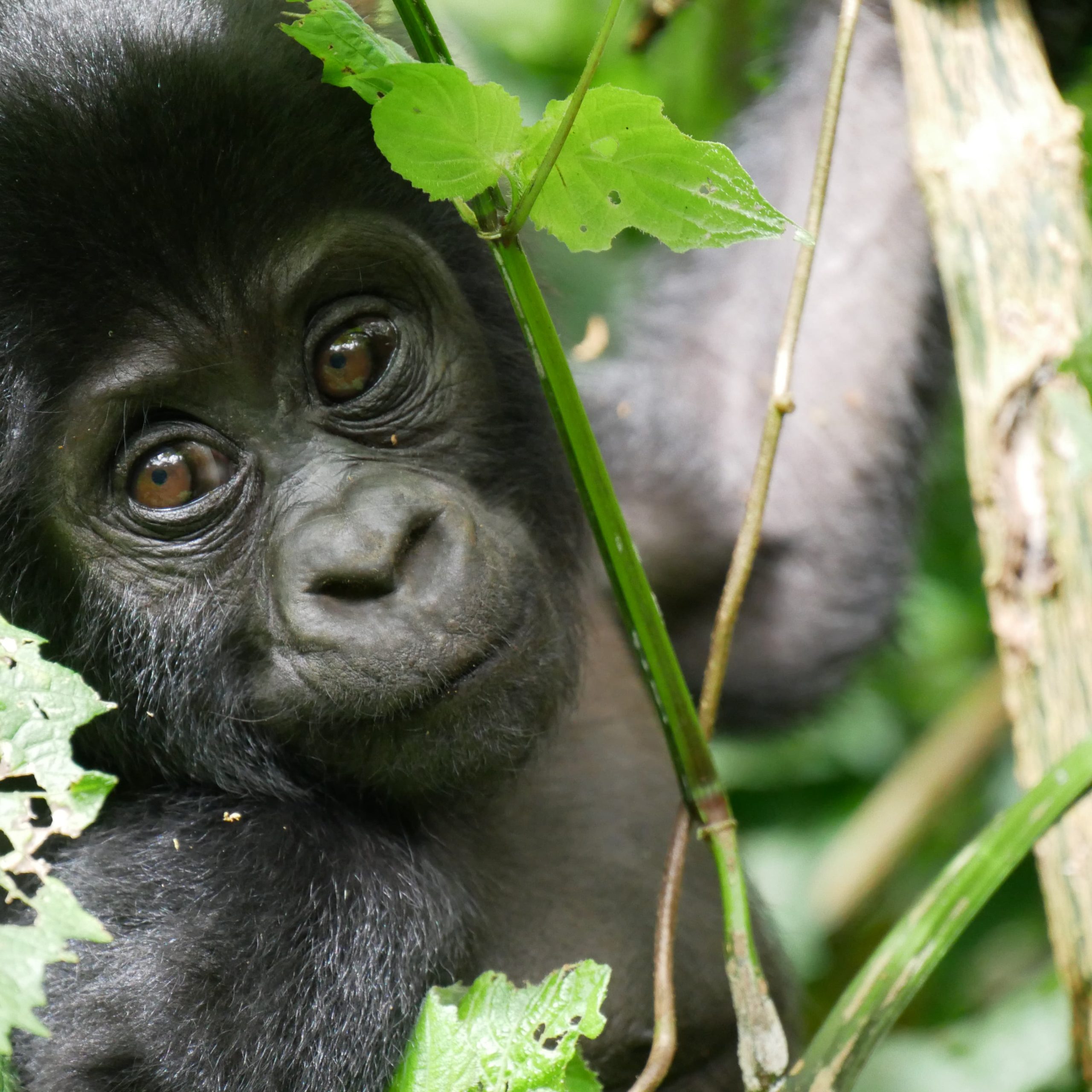Subtitle: Discover the fascinating ways these gentle giants adapt to life in the misty mountains of Uganda.
Introduction
Deep in the heart of southwestern Uganda lies one of Africa’s most captivating wildernesses, Bwindi Impenetrable National Park. Home to nearly half of the world’s remaining mountain gorillas; this UNESCO World Heritage Site is more than just a biodiversity hotspot. It’s a rugged, mist-shrouded sanctuary where mountain gorillas have evolved and adapted to survive against the odds.
But how exactly do these majestic primates navigate the steep, tangled terrain and unpredictable weather of Bwindi’s mountainous rainforest? Let’s explore the remarkable ways mountain gorillas have adapted to this unique environment and how it shapes their daily lives.
Built for the Mountains: Physical Adaptations
Mountain gorillas are perfectly engineered for life in the highlands. Their strong, muscular limbs help them climb steep slopes, knuckle walk across uneven ground, and pull aside dense vegetation with ease. Their large chests and long arms aren’t just for show they’re powerful tools for navigating the forest.
Their thick fur is another key adaptation. Unlike their lowland cousins, mountain gorillas have longer, denser hair that insulates them from the cold temperatures often found at elevations above 2,000 meters (6,500 feet). Whether it’s misty mornings or chilly rains, these gorillas are well-equipped to stay warm.
Diet: Eating What the Mountain Offers
The mountainous terrain of Bwindi may be tough, but it’s also lush. Mountain gorillas are herbivores, and their diet reflects what the forest gives them. They feed on over 100 plant species leave, stems, shoots, and bark. Because fruit is rare in high altitude forests, gorillas in Bwindi have adapted to a mostly leafy diet.
They move slowly through the forest, foraging for the most nutritious greens, which provides them with all the water they need no need to search for rivers or streams.
Social Behavior: Living in Tight-Knit Families
Living in a challenging environment means cooperation is essential. Mountain gorillas live in stable social groups led by a dominant silverback. This strong leadership helps the group move safely through the thick jungle, avoid threats, and find food efficiently.
Infants are carried by their mothers and protected by the group, while older gorillas learn survival skills by observing their elders. This tight-knit social structure ensures that knowledge is passed down through generations.
Weather Challenges and Daily Life
Bwindi’s rainforest is known for sudden rains, dense mist, and limited sunlight. Mountain gorillas adapt by adjusting their activity patterns. On colder or wetter days, they may rest more to conserve energy. They also build new nests on the ground or in trees each evening, carefully selecting dry spots to sleep.
The ever-changing weather shapes their movements and routines, but gorillas have learned to thrive in these conditions.
Conservation and Tourism: A Delicate Balance
Thanks to strict conservation efforts and regulated gorilla trekking tourism, the population of mountain gorillas in Bwindi is slowly increasing. Tourists who visit often find it a life-changing experience trekking through the misty hills and coming face-to-face with a gorilla family is nothing short of magical.
But it’s important to remember: these gorillas are still endangered. The terrain that protects them can also isolate them, making them vulnerable to disease and habitat loss.
Conclusion: Nature’s Masters of Adaptation
Mountain gorillas in Bwindi Impenetrable National Park are more than just survivors they’re a symbol of nature’s ability to adapt and endure. Their resilience, intelligence, and social bonds make them uniquely equipped for life in one of Africa’s most awe-inspiring landscapes.
Planning a trip to Bwindi? Respect the rules, keep your distance, and cherish the privilege of witnessing one of nature’s rarest wonder right where they belong.


Comment (0)